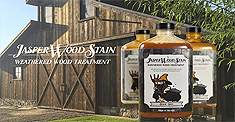Basics Beginners Must Know Before Heading to a Lumber Supplier in Utah
Planning a home improvement project? Thinking of doing some Do-It-Yourself work? You could be planning to make a custom dining table, sturdy new bench or shelf. But before you can start, you need the most suitable lumber for this DIY endeavor. So you’ll need to head to your local lumber supplier in Utah to procure the right kind of wood for this home improvement project. But this can be a bit intimidating for first timers and even seasoned woodworking pros.
The success of any kind of woodworking project depends on finding the right kind of wood. Choosing wood that’s not suited to the conditions or the demands of the job can result in subar or undesirable outcomes. You might have to start again from scratch. So knowing a handful of useful facts about lumber can help prepare you for the process of choosing the optimal type of wood for the specific sort of project you are planning. With this information, you can be guided as you head to your local lumber store in Utah for some shopping.
Hardwood and softwood
Contrary to what their names might imply, it’s not really about their hardness or softness. Hardwood stems from deciduous trees such as walnut, mahogany and birch. Softwoods are made up of conifer trees such as cedar, spruce, pine and fir.
Grading
For hardwood, grading is based on the amount of defects on a board. For softwood, grading is based on two categories of construction and appearance. Wood that’s for construction is graded on strength. Wood for aesthetic purposes are graded on appearance.
Defects
These can be natural or man-made. The most common sort of defect is conversion, which usually occurs due to improper sawing technique when the lumber is being processed. Defects can also arise when fungus develops on the wood, if the wood in question is from locations with warm and humid conditions. Insects, abnormal tree growth, and other natural and environmental factors can also cause defects. So be thorough in inspecting wood for defects before you make your purchase.
Cuts
Like with a good steak, cuts are important in determining wood’s characteristics. Behavior and appearance can change depending on how boards are cut from logs. You will have to choose from three different kinds of cuts:
Plain-sawn: A cut that results in minimal waste but is prone to twisting.
Quarter-sawn: When a log is cut into four parts before the quarters are sliced along the axis to make a sturdy board. It can produce a lot of waste.
Rift-sawn: Cutting along the radius of the grain, which results in a matching grain pattern on each cut. This makes the strongest boards but is also the priciest method.
Size Matters
Your local lumber supplier in Utah will have lumber generally cut into standardized widths and depths before it is delivered to their site. For wall framing, stud or pre-cut sizes are generally available. And a lumber specialist can handle cutting the boards down to suit your exact specifications.
Got any other questions about lumber, wood types, or woodworking techniques for your DIY home improvement project? Reach out to your local lumber supplier. Our team of experts will help you find the lumber you need for your next project.






